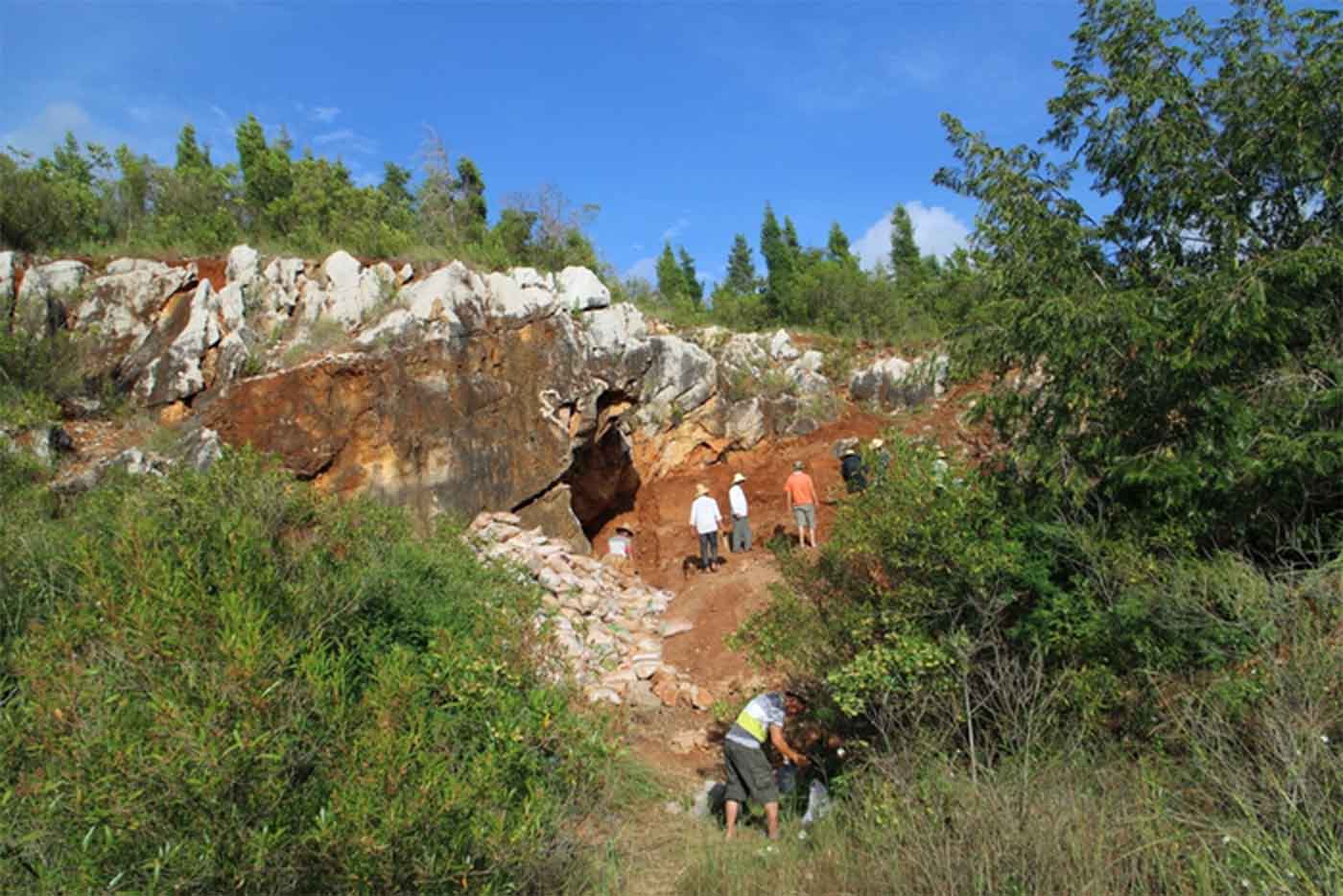The Red Deer Cave People might have been some of the most unusual and mysterious humans to walk the Earth in the past 20,000 years. Despite being around 14,000 years old – exceptionally recent in terms of human evolution – their fossils show they possessed many “archaic” human features associated with more distant relatives in the family tree.
Were they an ancient relic of humanity that held on until the end of the Ice Age or were they a unique hybrid population, perhaps related to Neanderthals and Denisovans? Alternatively, they might simply show that Homo sapiens have been extremely diverse throughout their history.
Human remains were first unearthed at a cave known locally as Maludong in Yunnan, southern China, in 1989. It became known as the Red Deer Cave due to the later discovery of giant red deer fossils at the site, suggesting the human inhabitants cooked and ate the animals there.
It wasn’t until 2012 that scientists started speculating whether the individuals in the cave represented a new human species. By studying their peculiar jaw and teeth, archaeologists noted the hominins had thick skulls with flat faces, broad noses, small chins, large molar teeth, and prominent brow ridges. Although possessing a “moderate” sized brain, these features are generally associated with older, long-extinct members of the human family tree.
“We have discovered a new population of prehistoric humans whose skulls are an unusual mosaic of primitive features, like those seen in our ancestors hundreds of thousands of years ago,” Darren Curnoe, an evolutionary biologist at the University of New South Wales, told National Geographic in 2012.
“In short, they’re anatomically unique among all members of the human evolutionary tree,” added Curnoe.

The excavation site of Maludong (Red Deer Cave) in Yunnan, southern China.
A 2015 study about a thigh bone discovered at the Red Deer Cave deepened the mystery. It suggested the individual weighed around 50 kilograms (110 pounds) and some shared anatomical features with early Homo erectus or Homo habilis, which fell into extinction around 1.5 million years ago.
This did not fit neatly in with the widely accepted chronology of human evolution. The femur bone was dated to just 14,000 years old, a few thousand years before Homo sapiens developed agriculture, sparking a significant evolution of culture that gave rise to complex civilizations.
“Its young age suggests the possibility that primitive-looking humans could have survived until very late in our evolution, but we need to be careful as it is just one bone,” Professor Ji Xueping from the Yunnan Institute of Cultural Relics and Archaeology said in a 2015 statement.
“The new find hints at the possibility a pre-modern species may have overlapped in time with modern humans on mainland East Asia, but the case needs to be built up slowly with more bone discoveries,” also commented Curnoe.
By 2022, advancements in the field of ancient DNA allowed researchers to study the genetics of the Red Deer Cave hominins, providing a clear insight into their heritage. It confirmed that they were technically modern humans, Homo sapiens, just like us. In fact, they had a significant genetic connection to modern people living in East Asia, as well as Native Americans, who descended from the same groups as modern East Asians.
In other words, the Red Deer Cave People were not as unusual as was first assumed. Nevertheless, it remains apparent that the small population did have features not seen in any modern population of humans. There is still no clear explanation as to why they appeared this way, but it perhaps hints that humans living towards the end of the last Ice Age were even more diverse than those living across the world today.
Source Link: Red Deer Cave People: Mysterious Humans With "Archaic" Features Lived Just 14,000 Years Ago